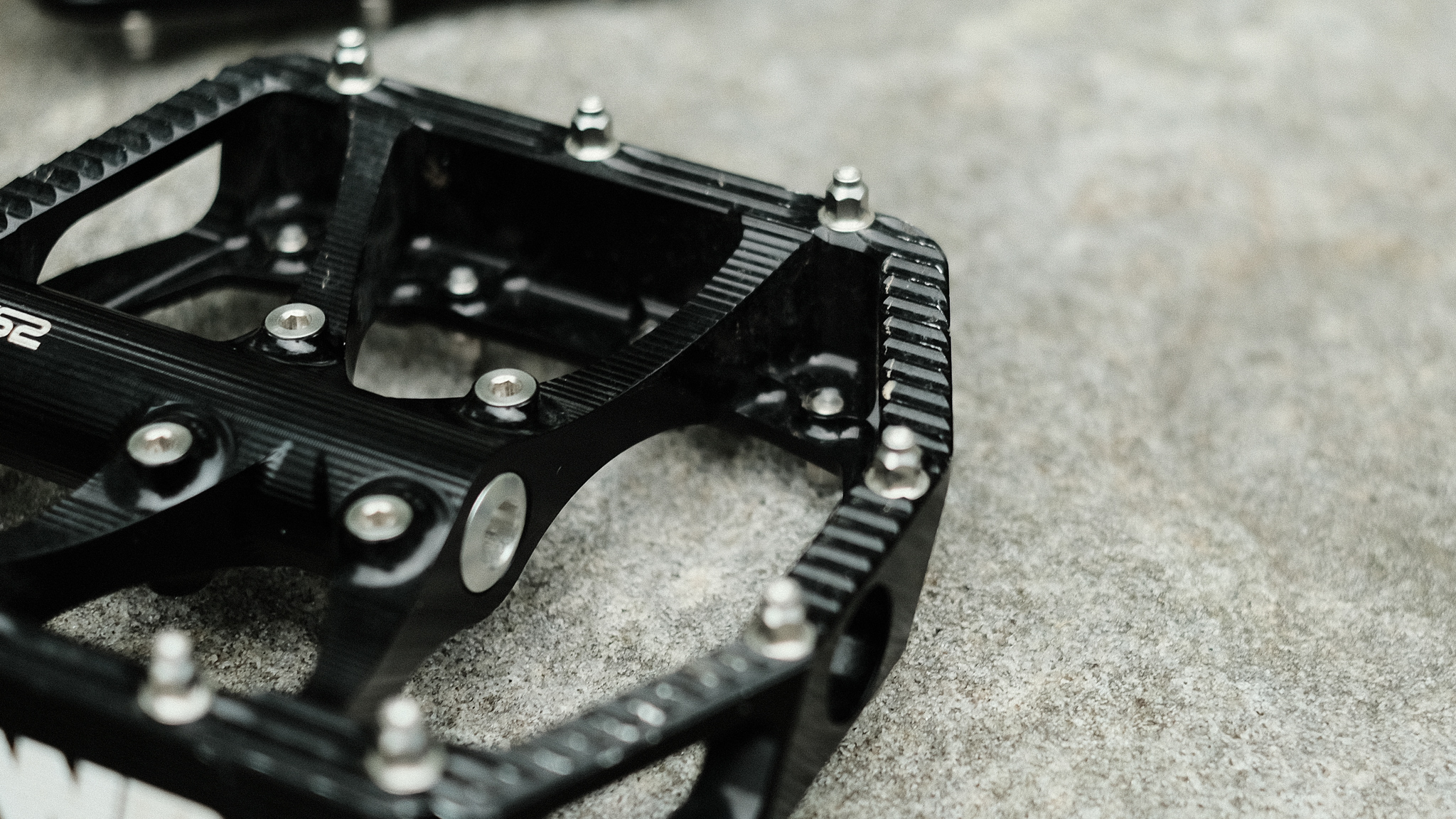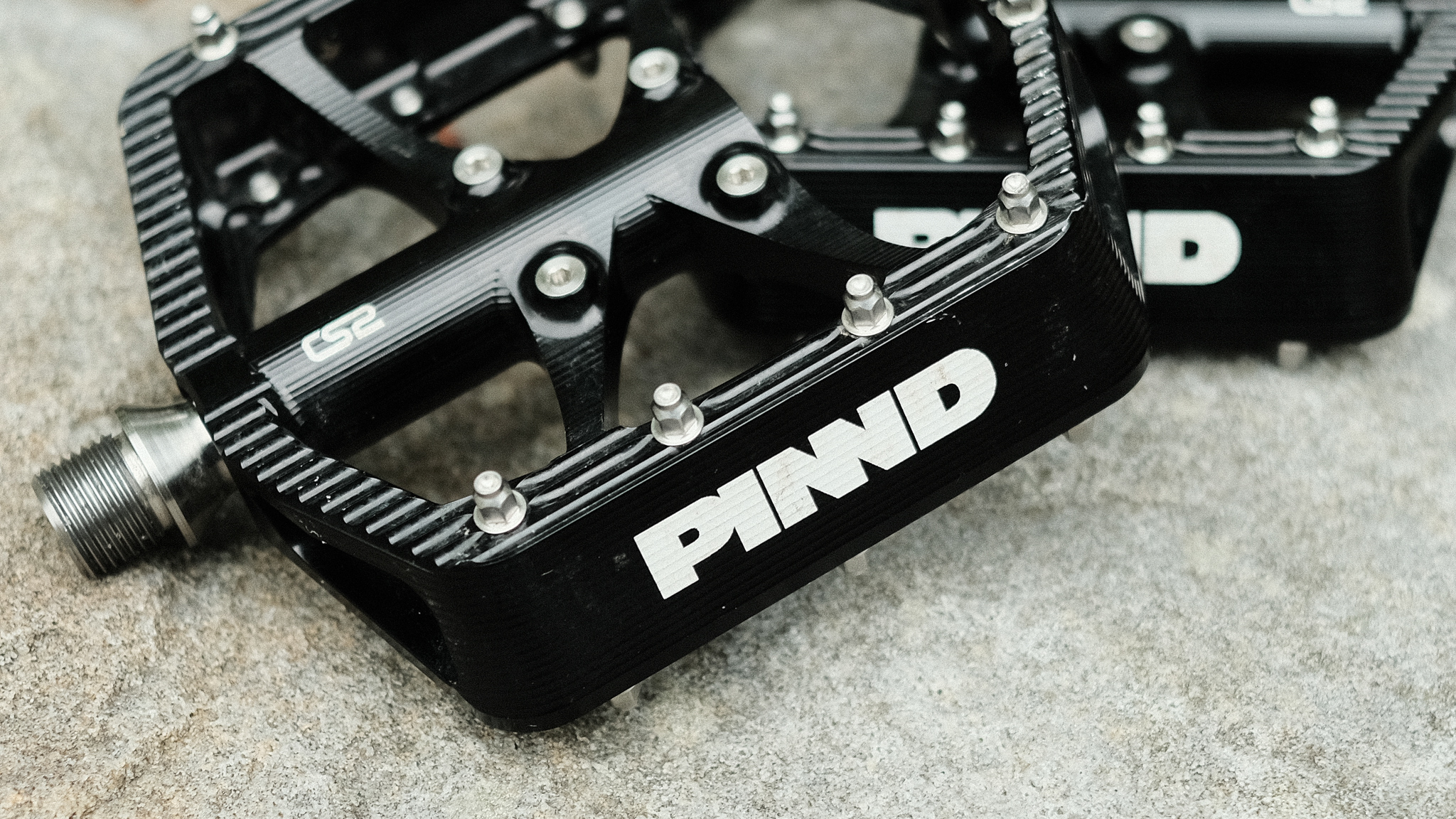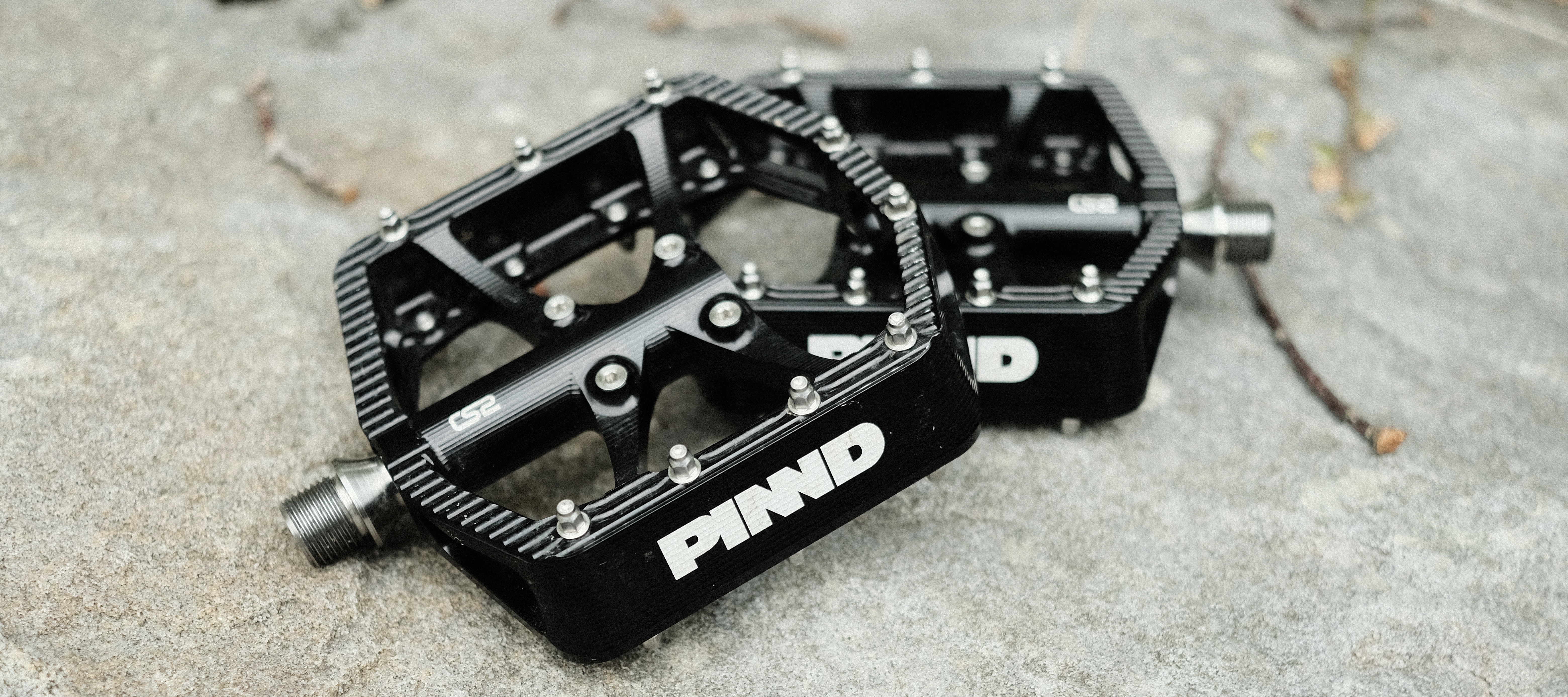Bike Perfect Verdict
The PINND CS2 uses the highest of quality materials, but unfortunately we’re finding it hard to recommend due its pronounced height, oversized pins and jaw dropping price tag.
Pros
- +
Incredible build quality
- +
Five-Year warranty
- +
Quality materials
Cons
- -
High price
- -
Tall in height
- -
Pedal strike prone
- -
Average grip
Why trust BikePerfect
The PINND CS2 is a premium flat pedal hailing from Scotland that’s said to have been engineered to withstand the toughest trails and conditions. While the weatherproofing, machining and overall build quality is seriously top-notch, it’s the shape, sub-par traction and vague under-foot feel that makes them hard to recommend, especially when there are so many other brilliantly performing flat pedals available that cost much less.
Design and specifications
At the heart of the CS2 lies a swanky grade 5 titanium spindle which spins on two outer cartridge bearings and one inner HK1015 needle bearing. All internal bearings are oil-sealed which PINND claims to give exceptional protection against grim-weather ingress; something that should in turn result in lengthy service intervals and eliminate the side-to-side axle play commonly found on other more conventional designs that use bushings as opposed to bearings.
The body itself uses a CNC machined 7075 T6 aluminium to provide a 100 X 105mm footprint. PINND haven’t mentioned it specifically, but given they are based in Scotland, we suspect the CS2’s spacious design has mud clearance as a foremost priority. The leading edges of the CS2 are also chamfered which in theory should help shrug off pedal strikes.
Whilst I stetted with the stock 18 pin arrangement, it is possible to run a total of 26 pins per pedal if you want to fine tune the feel further. As standard the CS2’s ship with 303 grade stainless steel pins, but PINND does offer a titanium pin upgrade kit for riders wanting to reduce the weight further. Alongside the substantial pins the entire perimeter of the pedal is serrated to help improve traction further.

PINND back their pedals with a five-year warranty and also offer a half price crash replacement scheme – should you whack them beyond repair on something trail side. Interestingly, PINND also states the CS2 has no maximum weight limit.
I tested the regular £195 CS2, but PINND also offers the £155 CS2s which features a reduced body size for those with smaller feet. For riders wanting the most pimped pedal possible there’s the £265 CS2+, which uses beryllium copper spindles and pins to increase the overall strength even further.
While PINND claim the CS2 to weigh 420g, they actually clocked my scales at a respectable 411g.
Performance
Visually, the PINND’s beefed-up aesthetic reminds me of pedals from the mid 2000s, and unfortunately I found their performance and feel matched those of that era too. Underfoot the CS2’s chunky profile is tall enough that I could tell my overall mass was higher than normal when riding down the trail. Physically measuring the CS2’s body confirmed this feeling and their 22.1mm leading edge is much taller than something like Hope’s F20 which measures at 15.2mm; it’s worth noting that the F20 is about average when it comes to platform size, too. The CS2’s larger than average overall height also meant I experienced more pedal strikes than I would usually encounter on trails I ride all the time.
In terms of outright traction, I found the CS2’s to be average when compared to the best flat pedals, and even when meshed with the best flat pedal shoes, I never felt completely confident in their grip levels when charging through rough terrain. This does mean on-the-fly foot placement adjustment is easy, but it comes are the trade off of a full-locked in feel – something I feel is the most important mannerism of any flat pedal. I think the main contributing factor to this characteristic is the size and bluntness of the pins themselves.

One thing you can’t argue with though is the quality of PINND’s craftsmanship, and just from holding the CS2 you can sense that this is a brilliantly made bit of kit. While I haven’t been riding the CS2 long enough to test PINND’s longevity claims, I have no reason to believe they won’t be bombproof.
Verdict
The flat pedal market is really competitive, and while the PINND CS2 isn’t a bad product with very impressive build quality and material choice, it’s performance simply doesn’t compete with the current market leaders when it comes to outright grip and feel. Add in the uber-high price tag and the CS2 is only really going to appeal to riders who want ultimate weather sealing and don’t care how much it costs.
Tech specs: PINND CS2 flat pedal
- Price: £195
- Size: 100 x 105mm
- Weight: 411g (pair)
- Colors: Black or silver
- Key materials: Aluminium body, titanium spindle

Jim Bland is a product tester and World Cup downhill mechanic based in North Yorkshire, England, but working Worldwide. Jim’s chosen riding genre is hard to pinpoint and regularly varies from e-bike-assisted shuttle runs one day to cutting downcountry laps the next. Always on the hunt for the perfect setup, Jim will always be found comprehensively testing kit with World Cup racing levels of detail. His ultimate day out includes an alpine loam trail, blazing sunshine, and some fresh kit to test.
Rides: Santa Cruz Hightower, Santa Cruz v10, Specialized Kenevo.
Height: 170cm
Weight: 64kg

